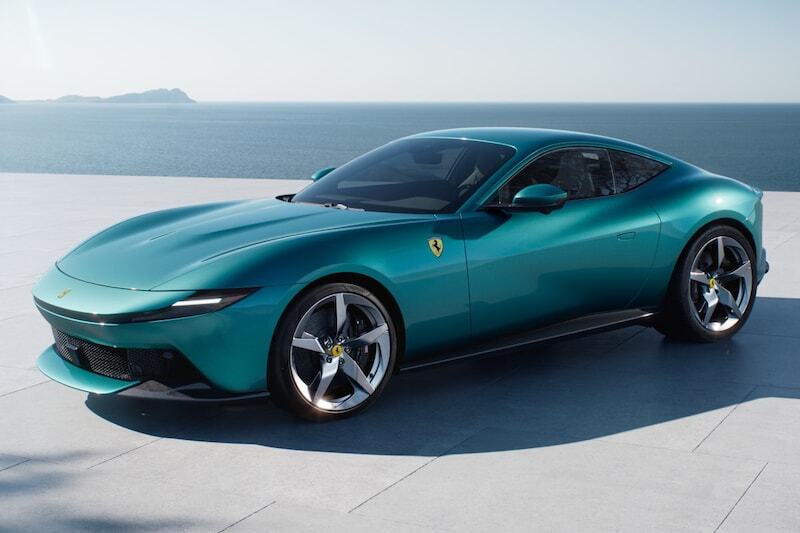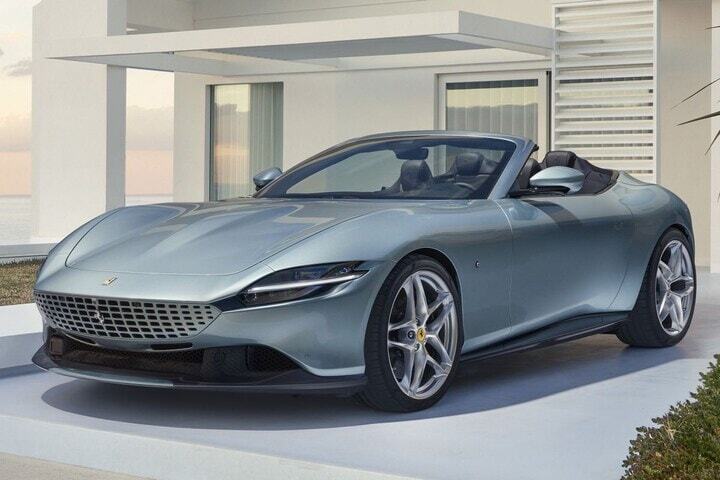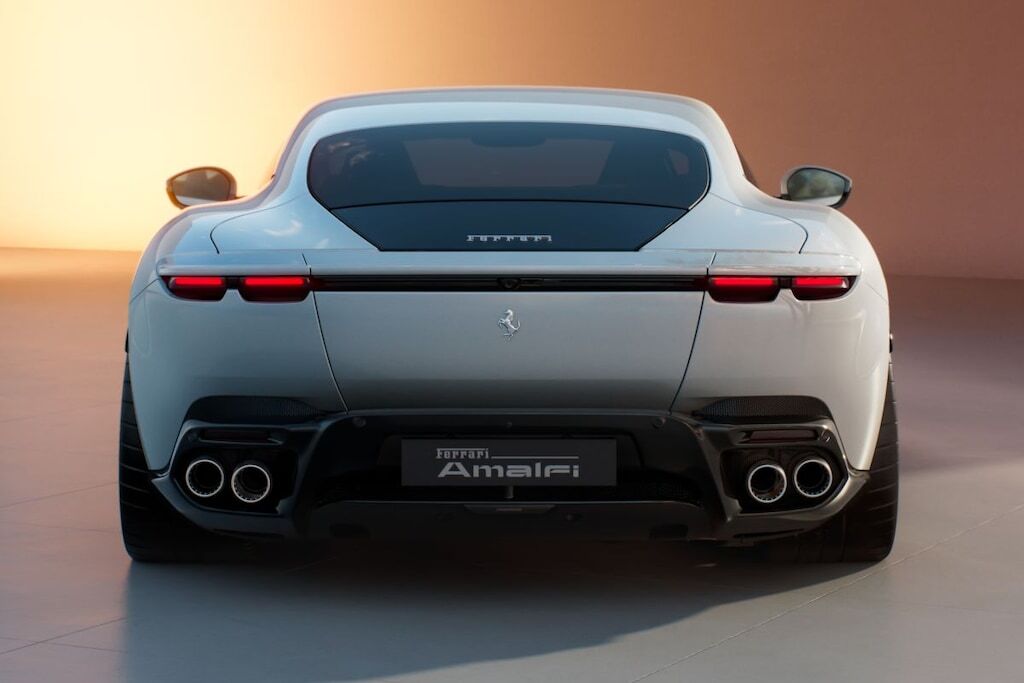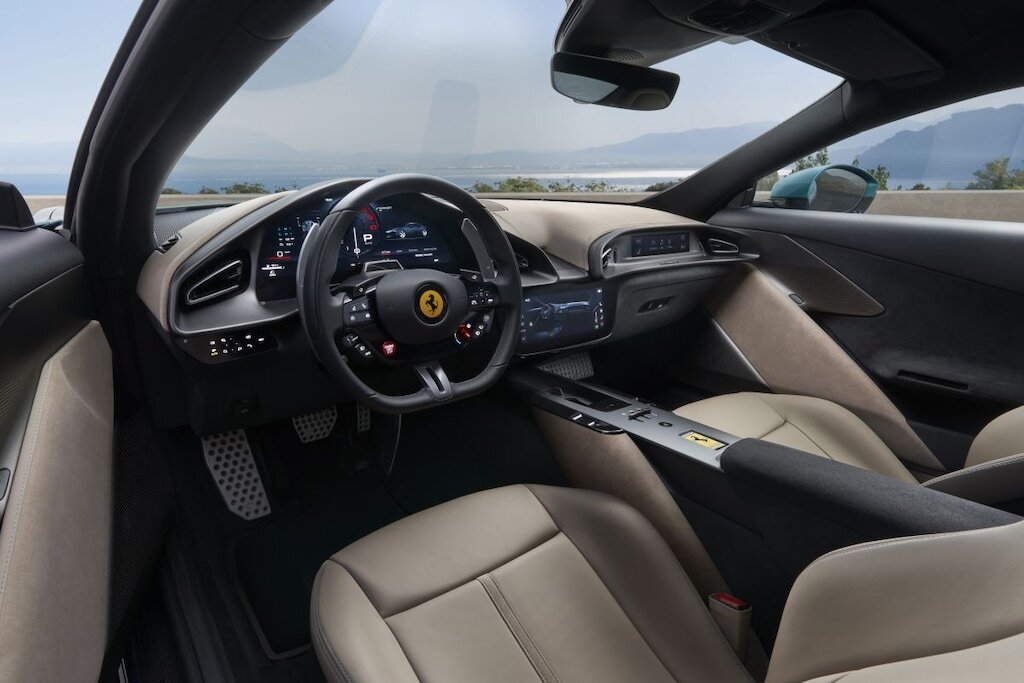
Forget the Ferrari Roma. This is its successor: the Ferrari Amalfi! Although the Italians are giving it a new name, the Ferrari Amalfi is not entirely new. That also explains why it looks so much like the Roma.
Highlights Ferrari Amalfi
Ferrari likes to give a model a new name simultaneously with a facelift to distinguish the renewed version from the original. The Roma, which was presented at the end of 2019, is now succeeded by this Amalfi. At least, that applies to the Roma Coupé. It already went out of production in 2024, while the open version launched in 2023 – the Roma Spider – is still being produced alongside this Amalfi. It will also eventually make way for an Amalfi-named successor.
As is the case with many models of the brand, Ferrari names the Roma successor after a city or region. In this case, it is not California, Portofino, Modena, Maranello or Daytona, but a beautiful small town on the Amalfi Coast. No description of the number of cylinders or the fact that the car is ‘super fast’ in the name. But fast, it certainly is.

The Ferrari Roma Spider hasn’t been around that long and can stay for a while.
Much different
Before we go through the specifications, we will digitally walk around the car. Just like the warmly received Roma, the Ferrari Amalfi will surely be a visual treat for many. Fortunately for those who thought the Roma was a beauty: the Amalfi still looks very similar, although the entire front, for example, is new. The completely new headlights are visually connected to each other by a black strip. The traditional grille that the Roma had is not found on the Amalfi. At least, not in that form. The opening in the bumper is much larger on the Amalfi, in addition, the Amalfi rakes in cooling through the slots that are located directly above the headlights. Not only are the headlights and bumpers different: the hood has also been renewed. Just look at the *power dome.* That elevation in the middle of the hood is wider and is this time strongly flattened on the top. With its new front, the Amalfi visually connects nicely with the 12 Cilindri.
Those who look quickly may see little new at the rear. Those who look closely will see that a lot has changed. The concept of taillights of the Roma remains, but the execution is different. Here too, on both sides of the rear, a set of two horizontal taillights, although this time there is a straight horizontal ‘cap’ over it. Also different is the placement of the license plate. It is no longer in the tailgate, but centrally in the rear bumper. The tailgate is therefore also new in shape, the sheet metal on either side of it as well. Ferrari does not go along with the craze to write the brand or model name in large letters on the rear. Here, therefore, just the proud prancing horse as a visual treat for those who drive behind it.

Ferrari Amalfi: more different than you think.
Interior
More changes are made IN the Ferrari Amalfi, because the entire dashboard is new. From the canopy and the air vents of the climate control housed on either side of it to the infotainment screen and the seats. The rather high-placed vertical infotainment screen of the Roma gives way to a lower-positioned horizontally oriented example. The display that is located directly in front of the passenger gets a similar frame as the instrument panel. The high-rising center tunnel of the Roma does not return. Centrally in the lower new version, we see the Ferrari logo, the beautifully sculpted control element referring to the shift pattern of a *gated* manual gearbox to control the eight-speed dual-clutch automatic transmission.

Specifications
Like its predecessor Roma, the Ferrari Amalfi also has a 3,855 cc V8 with two turbos. This twin-blown eight-cylinder now produces not 620 hp, but 640 hp and to the rear wheels. The maximum torque is unchanged at 760 Nm, as is the speed range in which it is available (3,000 – 5,750 rpm). The extra power comes from differently adjusted turbos, among other things, but there is more. For example, the camshafts are new, the old crankshaft makes way for another example and even the engine block must be lighter than ever.
If you step on the Amalfi, you should be able to help it from a standstill to a speed of 100 km/h in 3.3 seconds. The Roma took a negligible tenth of a second longer for that sprint. The 200 km/h is on the clock in 9 seconds (Roma: 9.3 s). The top speed is 320 km/h. Ferrari gives the Amalfi *brake-by-wire* technology, among other things.